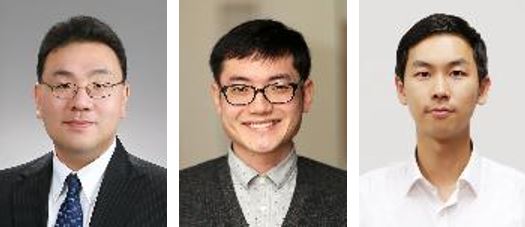- About
- Academics
-
Undergraduate Programs
- Civil and Environmental Engineering
- Architecture and Architectural Engineering
- Mechanical Engineering
- Industrial Engineering
- Energy Resources Engineering
- Nuclear Engineering
- Materials Science and Engineering
- Electrical and Computer Engineering
- Naval Architecture and Ocean Engineering
- Computer Science and Engineering
- Aerospace Engineering
- Chemical and Biological Engineering
-
Graduate Programs
- Civil and Environmental Engineering
- Architecture and Architectural Engineering
- Mechanical Engineering
- Industrial Engineering
- Energy Systems Engineering
- Materials Science and Engineering
- Electrical and Computer Engineering
- Naval Architecture and Ocean Engineering
- Computer Science and Engineering
- Chemical and Biological Engineering
- Aerospace Engineering
- Interdisciplinary Program in Technology, Management, Economics and Policy
- Interdisciplinary Program in Urban Design
- Interdisciplinary Program in Bioengineering
- Interdisciplinary Program in Artificial Intelligence
- Interdisciplinary Program in Intelligent Space and Aerospace Systems
- Chemical Convergence for Energy and Environment Major
- Multiscale Mechanics Design Major
- Hybrid Materials Major
- Double Major Program
- Open Programs
-
Undergraduate Programs
- Research
- Campus Life
- Communication
- Prospective Students
- International Office
The research team led by Prof. Sung-Jae Kim developed non-destructive cell concentration device
-
Uploaded by
관리자
-
Upload Date
2017.11.17
-
Views
532
The research team led by Prof. Sung-Jae Kim developed non-destructive cell concentration device
-Able to concentrate fragile cells such as red blood cells nondestructively through simple process
-published in ‘Scientific Report’

▲ The research team led by Prof. Sung-Jae Kim : (from the left) Prof. Sung-Jae Kim, BK Professor Hyomin Lee and graduate student Junsuk Kim
Seoul National University College of Engineering announced that the research team led by Prof. Sung-Jae Kim of Dept. of Electrical and Computer Engineering has developed a nondestructive cell concentration device that minimizes the shear stress acting on the substance to be concentrated by using a nanoelectrofluidics device.
This research developed core techniques in the field of medical diagnoses which concentrate fragile cellular species such as red blood cells without destructing them.
In order to detect target substances such as bio samples and heavy metals, it is necessary to use expensive detectors or to increase the concentration of the substance in the sample preparation stage. In the case of monomolecular chemicals with small molecular weights, there are various methods of concentration, but the methods are limited for biomaterials with thin membrane. Although centrifugation is mainly used, there is a desperate need for a device for non-destructively concentrating a target substance when the cell is easily fragile.
The research team devised of a device which have a parallel connection of the microchannel and the high conductive nanoporous membrane. The device has a surface electrical conductivity tens of times greater than conventional devices. As a result, the vortex (electric convection) generated in the concentration process is suppressed, and the force (shear stress) acting on the target material to be concentrated can be minimized. The team verified the effectiveness of the proposed device through experiments and theoretical simulations and showed that it can concentrate red blood cells nondestructively under high electrolyte enrichment conditions.
This mechanism is a remarkable achievement since it can improve the stability of electrofluidic device by increasing the surface conductivity. Furthermore, it is expected to dramatically reduce blood collection in patients who need frequent blood tests.
Professor Kim Sung-jae said, "This research is based on the theoretical analysis, design of the experiment and finally the actual engineering application is well established." The proposed technology is applied to bio-nanosensing research field, Testing, food safety testing, drug testing and so on. "
Prof. Sung-Jae Kim said “This research, which is based on the theoretical analysis, was well established from the experiment design to the final application. The proposed technology will be applied to the bio-nanosensing research field as well as biomaterial testing, food safety testing, drug testing and so on ”
The study, ’Ion Concentration Polarization by Bifurcated Current Path’, was published on Scientific Reports, the sisterhood of the world's top scientific magazine, Nature, on the 11th of this month.